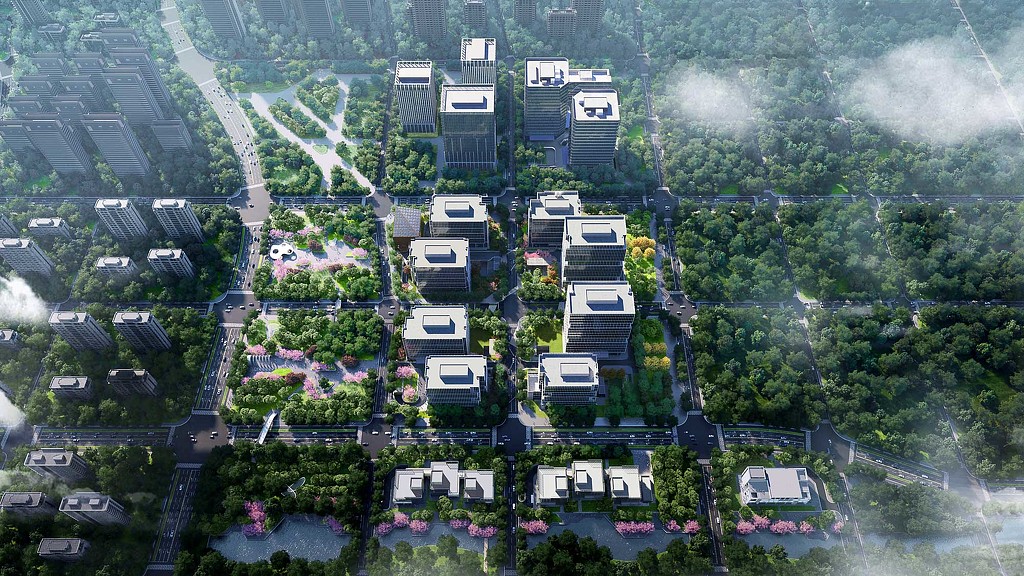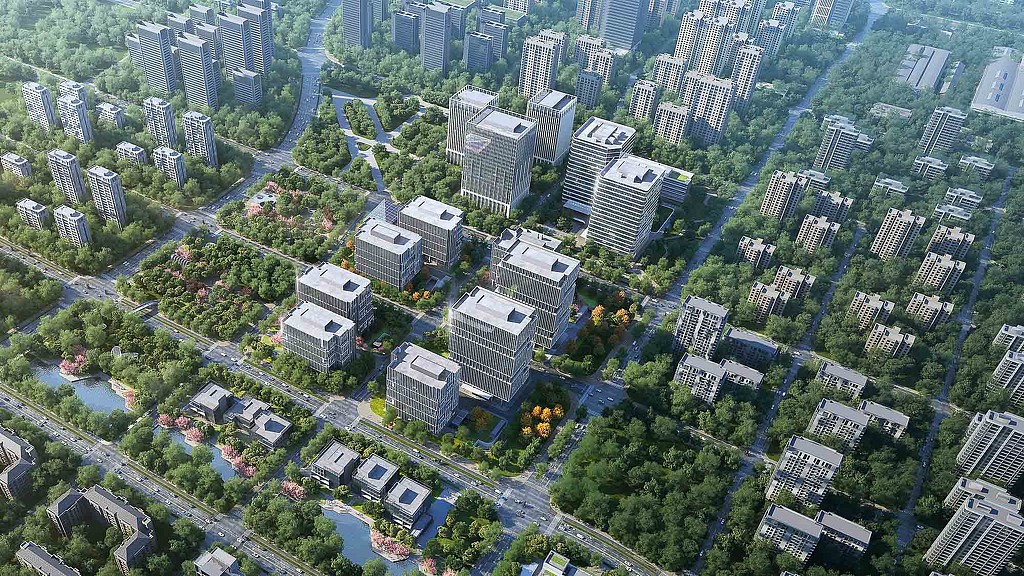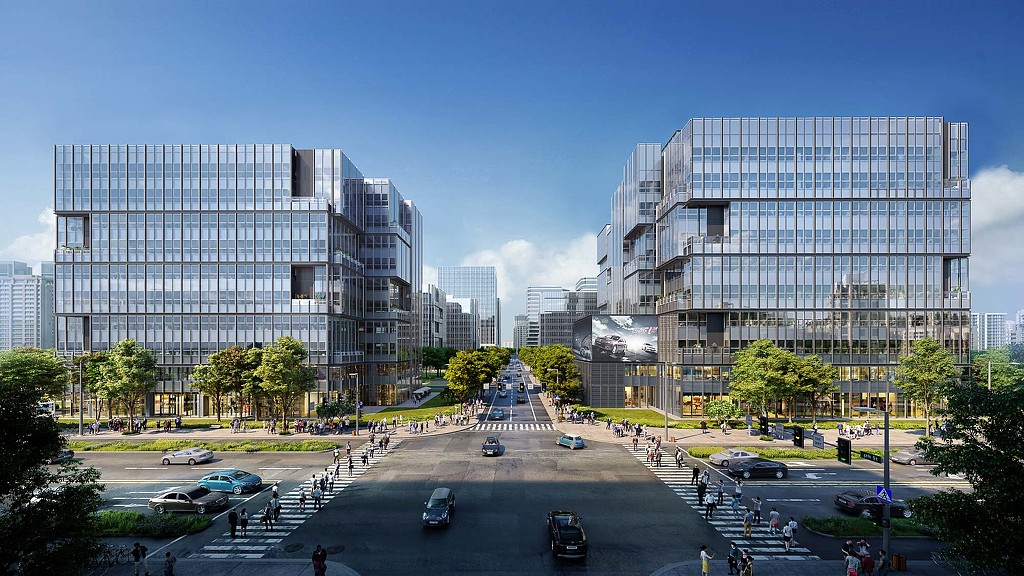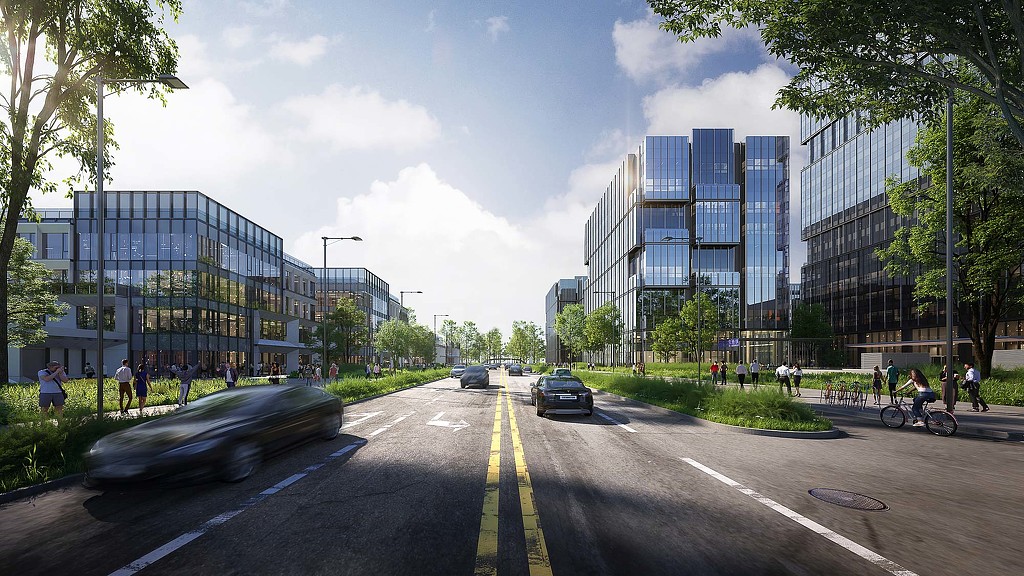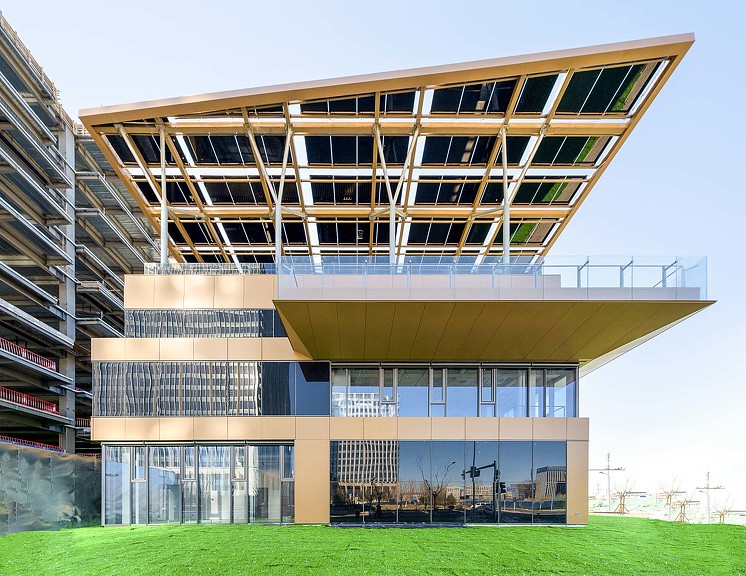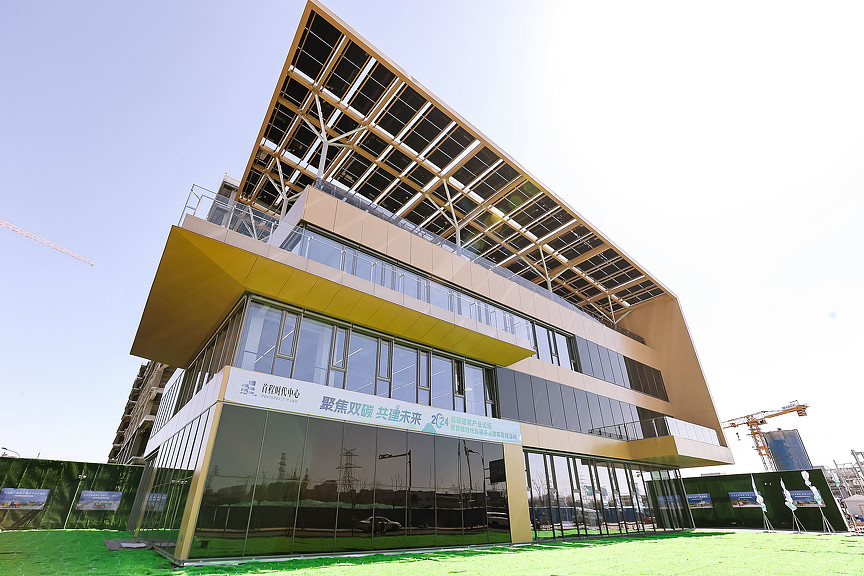Shoucheng Prospect Park Carbon-Neutral Pavilion
Beijing, China
The Shoucheng Prospect Park Carbon-Neutral Pavilion, designed by Gensler and co-developed by Shougang Fund and Royal Eagle Group (RGE), is the first zero-energy building in Beijing that can reach an annual carbon reduction of 96 tons and annual carbon emissions of 52 tons, accounting for an emission gap of -43 tons.
In 2020, Gensler joined Shougang Fund and RGE Group to redesign and transform the site, formerly home to the Shougang Group steel factory, into a low-carbon, sustainable office park.
With a zero-carbon technology exhibition hall and a lobby for various forums, the Carbon-Neutral Pavilion serves as a platform to advance the pace of sustainable development for the building industry in China, while showcasing low-carbon technologies and encouraging industry exchange.
The building is designed to achieve carbon neutrality through a series of advanced active and passive low-carbon technologies, including photovoltaic power generation, energy collection, and high-efficiency curtain walls. Carbon emissions generated by building operation are estimated to be 49.63 tons of CO2 per year, and electricity generated by the photovoltaic roof and curtain wall is estimated to be 57.04 tons of CO2 per year, while excess electricity will be sold back to the government for public use.
The project is equipped with six low-carbon strategies: (1) A high-performance enclosure system, (2) high-efficiency cooling and heating source and electromechanical system, (3) solar photovoltaic system, (4) intelligent control system, (5) green building materials system, and (6) carbon sink system. The comprehensive use of these systems enhances energy savings and improves energy efficiency for this carbon-neutral building, which not only balances its own energy supply, but also generates excess energy to achieve net zero-energy status.
The project has received two certifications: “Zero Energy Building Certification (Design Stage)” awarded by the China Association of Building Energy Efficiency and “Carbon Neutral” building awarded by the China Beijing Green Exchange.
